Let’s be honest—latiao doesn’t look like much. A thin red strip coated in oil, often crammed into plastic wrap with minimal English on the label. And yet, this snack has found its way into suitcases, dorm rooms, Reddit threads, and even the hands of skeptical food vloggers. Curious yet? What is latiao made of? It’s not beef jerky. It’s not licorice. And it sure doesn’t follow the snack rules you’re used to. But somehow, it’s addictive—and it has a wild origin story too.
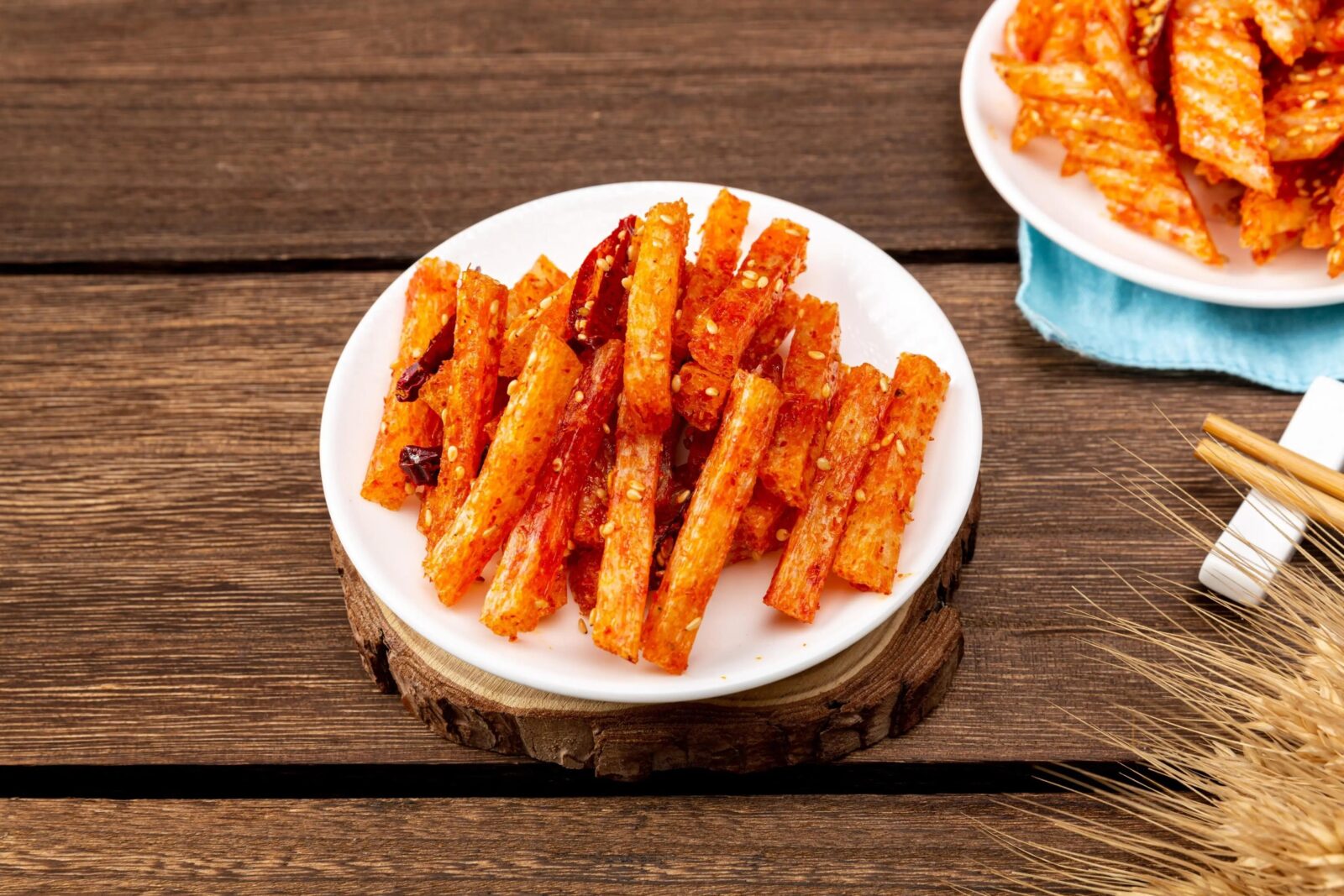
Latiao appearance
Origins and Invention
It didn’t start as a marketing campaign or a trending hashtag. Latiao—the chewy, spicy strip you now see on TikTok mukbangs or in Amazon snack hauls—came out of a flood. Literally. In 1998, torrential rain hit Hunan, wrecking crops and cutting off supplies of soybeans. Locals in Pingjiang County, once known for a kind of spicy tofu snack, had to get creative. I read somewhere (or maybe someone in Changsha told me) that three guys—Qiu Pingjiang, Li Mengneng, and Zhong Qingyuan—started experimenting with wheat flour instead. They steamed and pressed it, tossed in chili oil, added a bit of seasoning, and what came out was chewy, spicy, and way too addictive.
They didn’t call it "Latiao" right away, and it sure wasn’t meant to go viral. But somehow, the texture hit a nerve—rubbery but satisfying, like it shouldn’t be good, but it is. Fast forward a decade or so, and brands like Weilong (卫龙) took that humble snack and gave it polish. Fancy packaging, supermarket shelves, international shipping—even Weilong IPO’d in Hong Kong in 2022. Now you’ll see foreigners react to it online: “What is this spicy elastic strip and why can’t I stop eating it?” Yeah, we’ve all been there.
Latiao Flavor
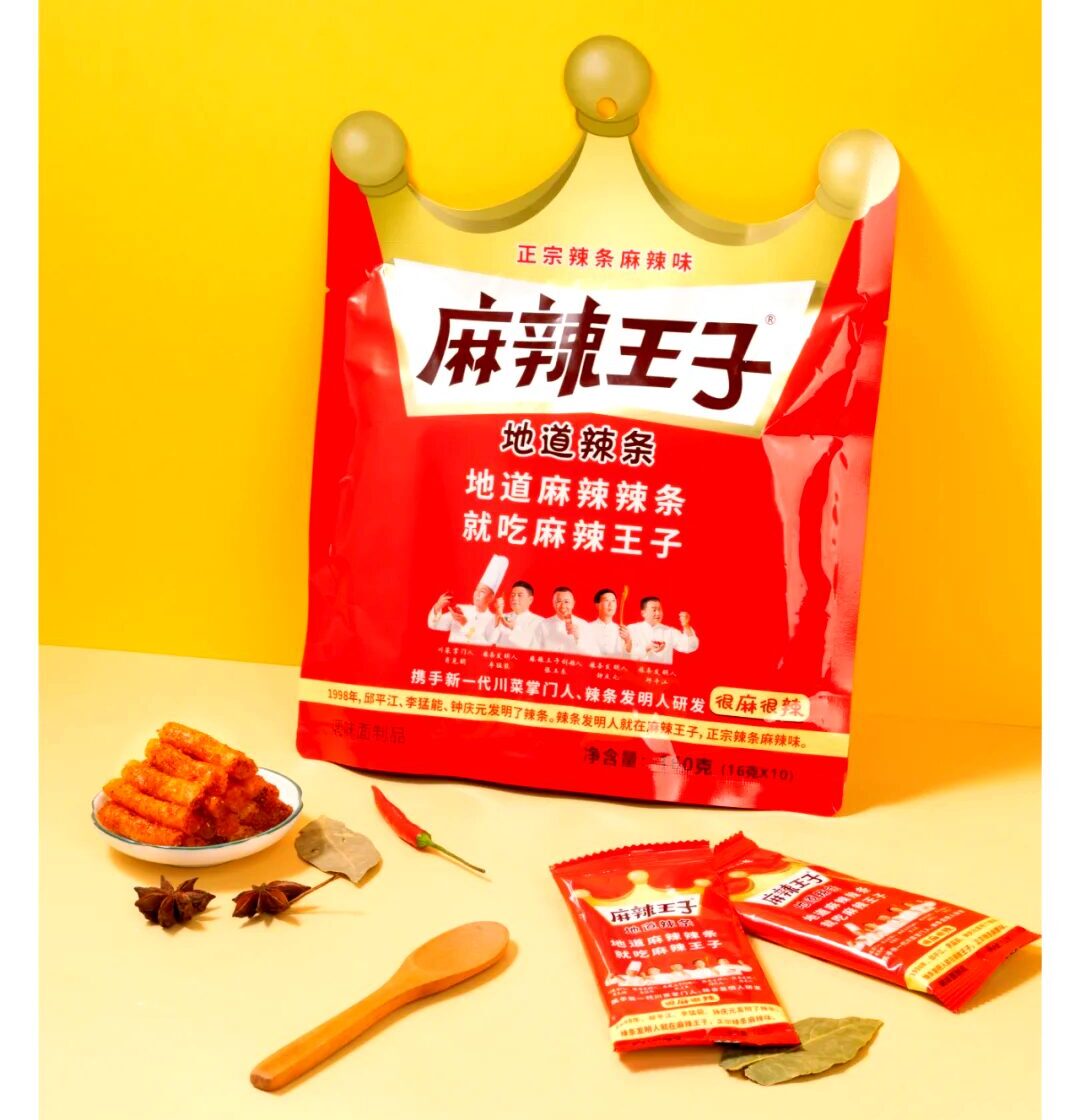
It’s not just spicy. That’s the first thing people get wrong. Latiao has this weirdly satisfying chew—like dried tofu meets ramen gone rogue. When you bite into one, there's a soft resistance, then that slow ooze of chili oil starts creeping in. Not burning at first, just warm. Then salt, a hint of soy sauce maybe, sometimes even a touch of sweetness (especially with Weilong). It’s like a flavor that keeps unfolding.
I grabbed my first pack from a corner shop near the subway in Changsha, and honestly, I didn’t expect much. But after two strips? I just kept reaching in. On Reddit, someone said, “Tried Weilong—reminded me of spicy licorice, in a good way.” Another review on Amazon called it “chewy jerky soaked in hot pot broth”. That one hit close.
In schools, it’s almost a social snack. You’d see kids crowding outside the tuck shop, fingers stained red, comparing heat levels. The smell alone could get you caught in class. It’s not clean or pretty, but honestly? That’s part of why it works.
Ingredient and Nutrition Labels
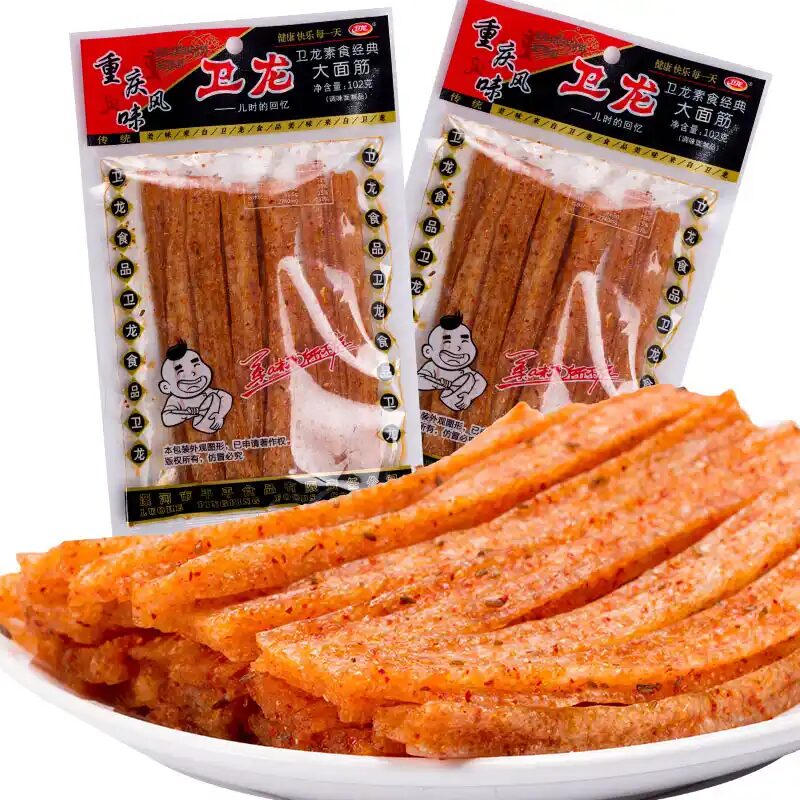
Weilong latiao
From Gluten Flour to Flavoring Oil: What Goes In
Open a pack of Weilong or any major brand, and you’ll see a lineup that reads like a snack chemistry class: vital wheat gluten, vegetable oil, chili powder, monosodium glutamate, salt, soy sauce powder, and yes, some kind of spice essence or “flavoring agent.” If that sounds like a lot—it is. But somehow, it works. That chewy base? It’s all gluten. The heat? Mostly chili and a touch of capsaicin extract. And the color? Well… there’s carmine or paprika oleoresin, depending on how bold the brand wants to be.
Here’s a sample from a Weilong Spicy Strip (30g) pack:
| Nutrient | Amount per 30g serving |
|---|---|
| Calories | 134 kcal |
| Fat | 7.2 g |
| Sodium | 486 mg |
| Protein | 5.6 g |
| Carbohydrates | 11.9 g |
You might think, “wait, this has more sodium than chips?” And you’d be right. Some homemade versions try to skip the coloring or reduce the MSG, but let’s be honest—it’s the oil and salt that make it taste right. Nobody eats Latiao expecting clean labels. But once you know what’s inside, it’s a bit easier to decide how often to reach for it.
Ingredient Comparison: Weilong vs. Homemade
Let’s not pretend they’re the same thing. Weilong’s version is slick, shelf-stable, and engineered to survive months in a convenience store bin. The ingredient list reflects that—preservatives, color enhancers, and that unmistakable kick from MSG. That said, it’s also consistent. Every strip tastes exactly like the last one.
Now, homemade latiao—if you’ve ever tried making it or even just watched a Xiaohongshu tutorial—it’s a different beast. Most skip the artificial stuff. It usually starts with wheat gluten dough, gets steamed or simmered, then tossed in homemade chili oil with real garlic and spices. No neon red color. The texture’s rougher. The flavor changes depending on who’s making it, and maybe that’s the charm. It doesn’t hit as hard, but somehow feels more... grounded.
Here’s a rough comparison:
| Feature | Weilong (Factory) | Homemade Version |
|---|---|---|
| Preservatives | Yes (e.g. potassium sorbate) | No |
| MSG | Yes | Optional or none |
| Coloring | Yes (carmine, paprika extract) | No |
| Sodium content | High (400–500 mg per 30g) | Medium (~250–300 mg per 30g) |
| Texture | Soft, uniform | Chewy, inconsistent |
So if you’re going for consistency and punch, factory-made wins. But if you like something a bit more raw, a little unpredictable—homemade is where it gets interesting.
How Is Latiao Made? The Process from Factory to Kitchen
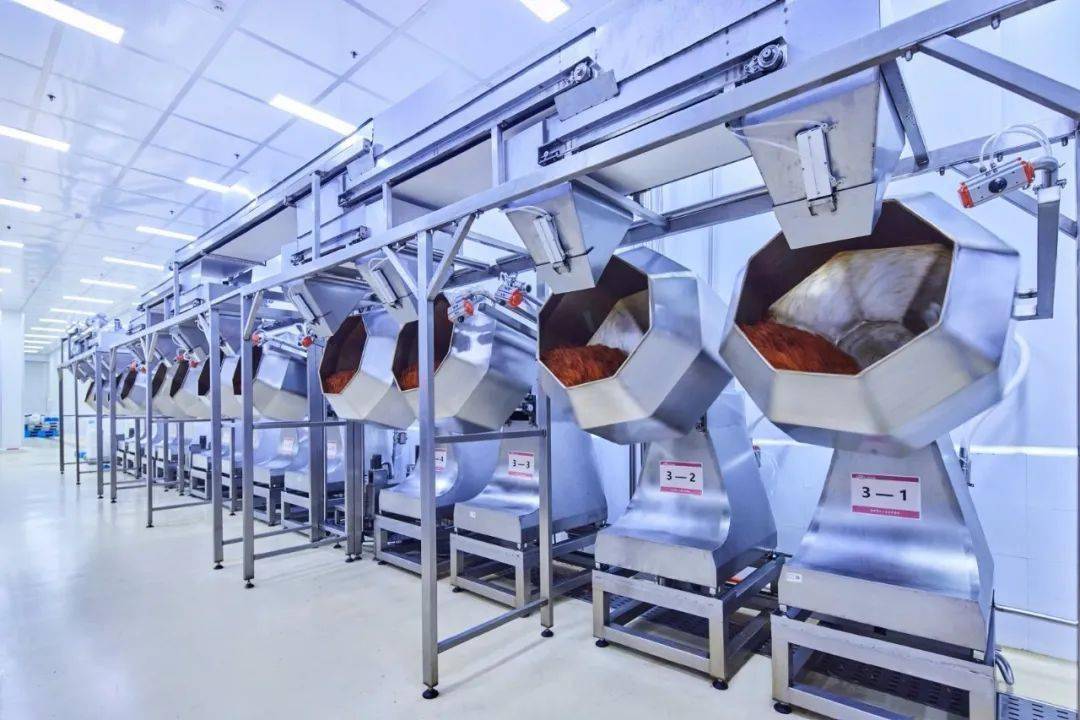
Factory-made latiao production
Industrial Latiao: Extrusion and Vacuum Sealing
Walk into a Latiao factory—if they let you in—and it feels more like a lab than a kitchen. Everything starts with vital wheat gluten, which gets mixed with water to form a heavy dough. Then comes the big machine: an extruder. It presses the dough into long, flat strips under high pressure and heat, a process called extrusion puffing. It’s hot, loud, and kind of mesmerizing. The strips are steamed, sometimes deep-fried depending on the brand, and then cooled on conveyor belts.
After that, they go for a quick oil bath or a spray of seasoning liquid, depending on the style. Some are dipped, some just misted. Finally, they’re packed—usually under vacuum seal—to keep them shelf-stable for months. The whole thing runs fast. You’d be surprised how many packs get sealed in a single minute.
There’s no grandma stirring chili oil here. It’s stainless steel, temperature sensors, automated arms, and a production goal to hit. It feels more like snack production meets sci-fi. Which might explain why every strip looks exactly like the last.
DIY Latiao at Home: A Simpler (But Messy) Version
Last summer, I tried making latiao at home. I didn’t expect much—mostly wanted to see if it was even doable without industrial gear. Turns out, it kind of is. Kind of.
Step one: I mixed about a cup of vital wheat gluten with some water and salt. The dough turned stretchy, like those stress balls you squeeze when you’re annoyed. I let it sit for a while—someone on Xiaohongshu said resting helps the texture. Step two: I rolled the dough into strips by hand, wrapped each one around a bamboo skewer, and steamed them for about 20 minutes. My kitchen started smelling oddly… gluteny?
Step three: The sauce. I heated some vegetable oil with garlic, green onion, chili powder, and Sichuan pepper. It hissed like mad. Once it calmed down, I added salt and a little sugar. Then came the fun (and messy) part—brushing that oily red mix all over the cooled gluten sticks. I let them dry on a rack for an hour.
They didn’t taste like Weilong. They didn’t look like Weilong. But they were chewy, spicy, and totally handmade. Not perfect, but weirdly satisfying.
Latiao’s Health Profile
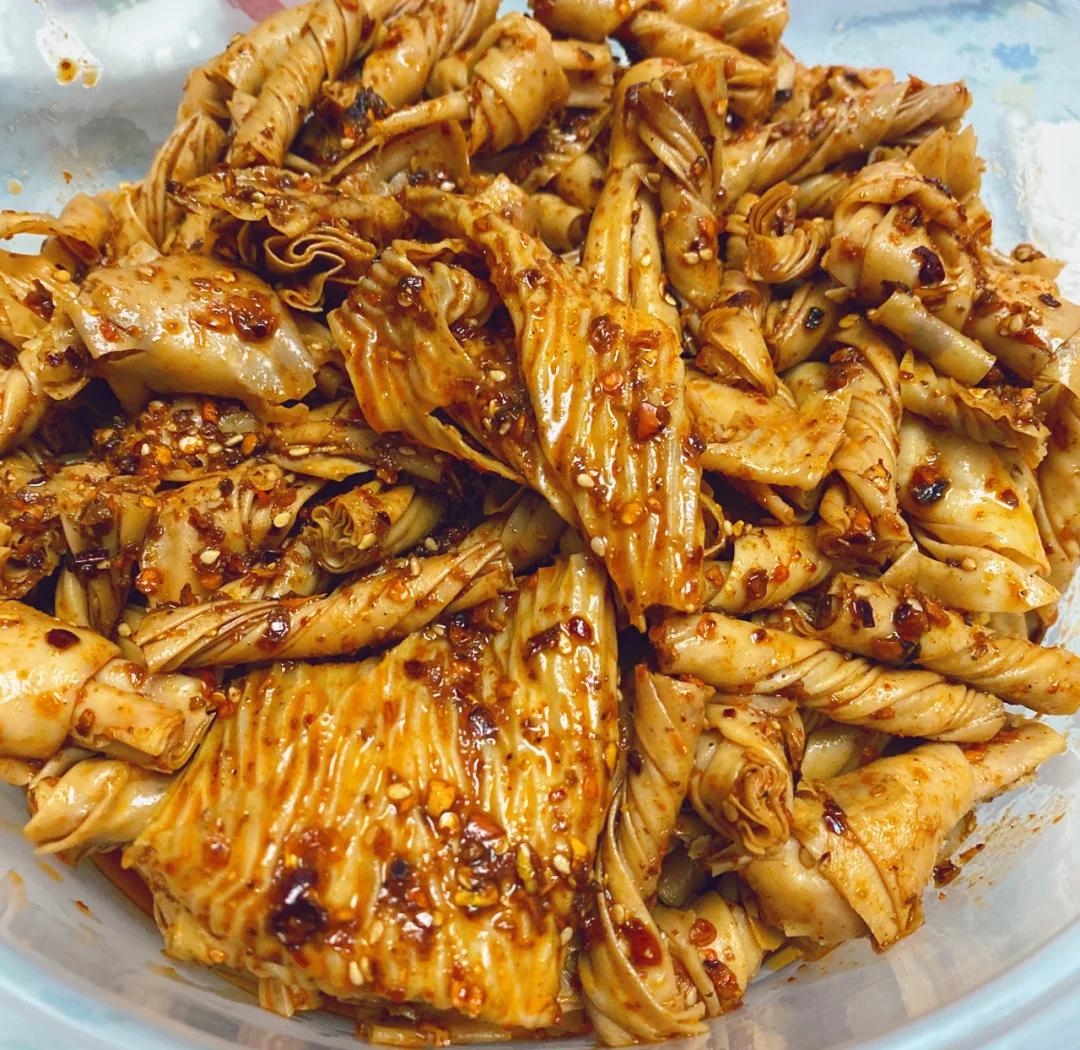
Homemade latiao
No one’s reaching for latiao thinking it’s salad—but that doesn’t make it evil. It lives in that blurry space between snack and guilty pleasure. Sure, a single pack might hit you with 480–500mg of sodium, and there’s a good dose of oil to go with it. But it’s not 2005 anymore. These days, companies don’t get to just dump preservatives in and call it a day.
In 2019, China’s National Medical Products Administration released GB 17401-2019, the national safety standard for spicy gluten products. It caps the use of sodium benzoate, potassium sorbate, and synthetic sweeteners. After that, big provinces like Henan and Hunan rolled out their own enforcement rules. Some brands even publish their test reports online, though it’s usually in fine print you’ll miss unless you squint.
The Chinese Nutrition Society suggests people treat spicy snacks like... well, snacks. Not a meal, not a daily habit. Even WHO lists high-sodium ultra-processed foods as a “limit but not eliminate” category. It’s when you stop counting and start replacing lunch with latiao that things get sketchy.
For me? I eat it maybe once a week, post-work, when I’m too tired to care and just need that salty slap in the mouth. Is it clean? No. But sometimes your brain wants a little chaos.
Frequently Asked Questions (FAQs)
Q: Is Latiao suitable for people with gluten intolerance?
No, latiao is made from vital wheat gluten, which is essentially concentrated gluten. If you’re gluten-intolerant or have celiac disease, this snack is a no-go. Even small amounts could trigger symptoms. Some brands might market “tofu sticks” that look similar, but they’re usually still made with wheat-based additives. Always check the ingredient list.
Q: What kind of oil is used in Latiao, and is it reused?
Most factory-made latiao uses vegetable oil, usually soybean or rapeseed oil. There have been concerns in the past—especially with small unregulated producers—about reused frying oil. But top brands like Weilong now follow China’s 2019 food safety guidelines, which prohibit repeated oil use beyond set standards. Still, homemade versions let you pick your own oil, which feels safer if you're picky.
Q: Is Latiao vegan or does it contain animal-based ingredients?
Technically, most latiao is vegan in terms of main ingredients—gluten, oil, chili. However, some brands add chicken bouillon, meat flavoring, or gelatin-based additives for taste or texture. If you're strictly vegan, go for the basic or homemade kinds. Some Chinese brands do label their spicy strips as “vegetarian,” but always double-check for flavor powders or broth extracts in the fine print.
Q: Does the flavor of Latiao change based on the region in China?
Yes, there’s a north-south divide in flavor. Southern brands like Spicy Prince go heavy on heat, using more chili and less sugar. Northern brands like Weilong are milder, with a hint of sweetness and more balance. Even within provinces, brands tweak recipes to match local snack preferences. If you like punchier flavors, stick with Hunan-based brands—they don’t hold back.
Q: How long does Latiao last once opened, and how should it be stored?
Once you open a vacuum-packed latiao, it’s best to finish it within 1–2 days, especially in hot or humid weather. It tends to lose chewiness and can even get funky fast. Some people store opened packs in the fridge, though the oil might congeal a bit. Homemade latiao lasts even shorter—usually 24 hours max at room temp. Sealed packs can stay good for 3–6 months depending on the brand.


